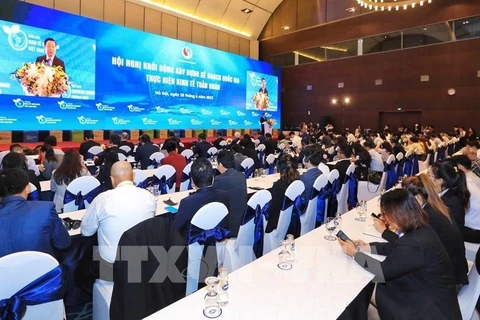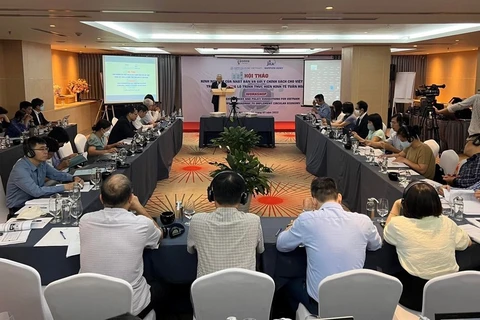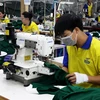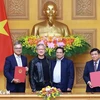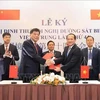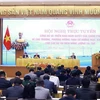 A Lagom employee loads bags of used milk boxes on to a truck for recycling. (Photo courtesy of Lagom)
A Lagom employee loads bags of used milk boxes on to a truck for recycling. (Photo courtesy of Lagom) The deputy head was speaking at the seminar "Circular business models: international experience and application in Vietnam" on August 19.
Cuong revealed that the Government approved the National Green Growth Strategy in October 2021 and the Scheme for Circular Economy in June 2022 to commit itself to the green path.
Recently, the Government has also assigned its ministries the task of developing a sandbox for testing circular economic models in the country.
Trinh Duc Chieu, deputy head of CIEM's Department for Research Reform and Enterprise Development, asserted that the notion of circular business is new to Vietnam’s business community.
He said just 3 to 6% of Vietnamese firms are fully aware of the notion, whereas those partly aware account for 20 to 30%.
About 9 to 10% think that the existing legal framework for circular business is adequate. Meanwhile, 18 to 20% believe such a framework is absent.
Only 2 to 15% have received Governmental support in some form, including preferential credits. Training support, specifically, has gone to 15% of the firms.
Vo Tri Thanh, Director of the Institute for Brand and Competitiveness Strategy, underscored digital transformation and circular economy as the two pre-conditions for green growth.
"Consumers' green mindset will be the driving force behind green transition," he added.
The director also said that green firms would run at higher profits than non-green ones in the medium- and long-term, but in the short-term, the former have to incur higher transition costs.
That means the Government should financially support green firms in their early stages to help them cover the costs, thereby facilitating the green transition.
Le Duy Binh, Director of Economica Vietnam, underlined that green consumers are the key to a circular economy since their buying decisions dictate firms' production.
"Policies to promote a circular economy should be formulated more consumer-centrically to produce their desired effects," he said.
Tran Van Hieu, Deputy Director of Lagom Vietnam LTD, introduced the circular business model that his firm has been embracing for many years.
The model comprises five steps, which are communicating, sorting, collecting, recycling and manufacturing.
He called for more favourable tax policies to save recycling firms from unnecessary costs.
"Garbage collectors sell waste to our firm without paying tax, and we have to do so instead under tax regulations. We need more favourable tax policies."/.
VNA
